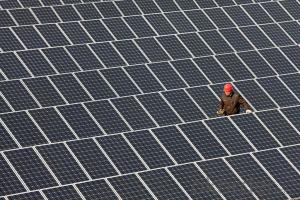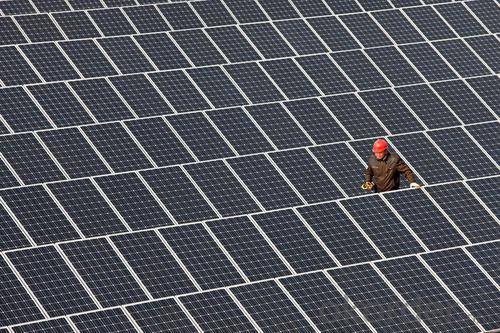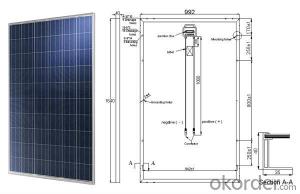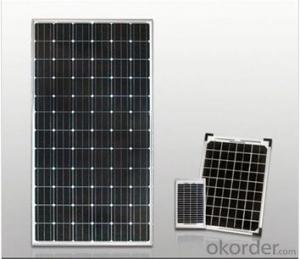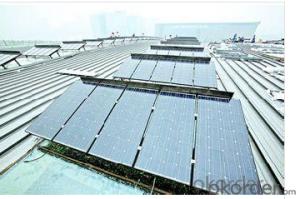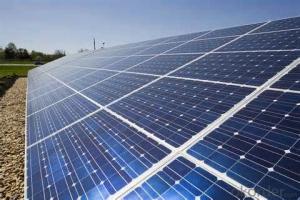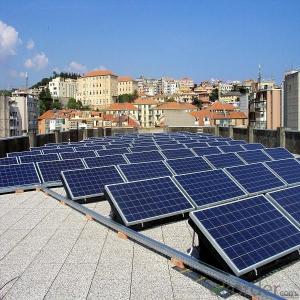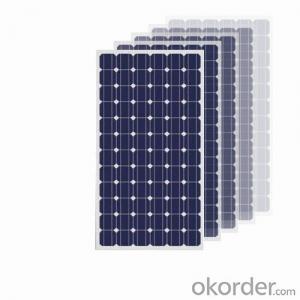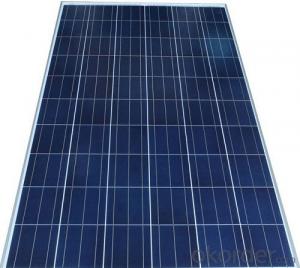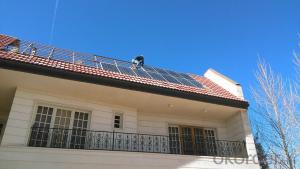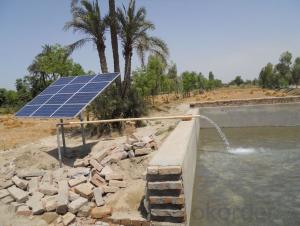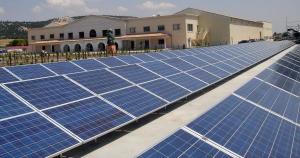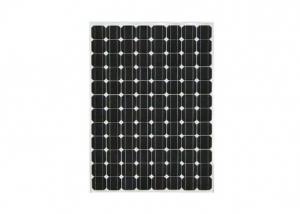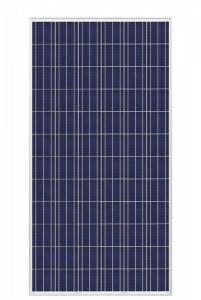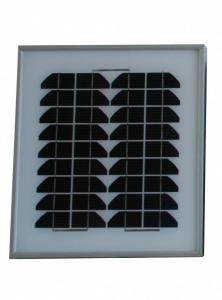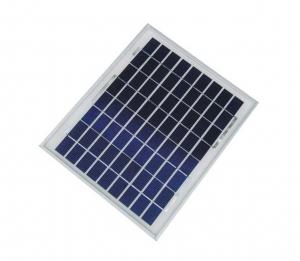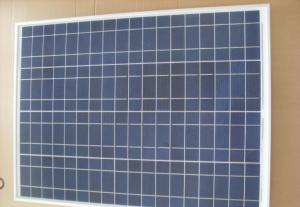Nds Solar Panels - High Efficiency Good Quality Poly 50w Solar Panel
- Loading Port:
- Shanghai
- Payment Terms:
- TT OR LC
- Min Order Qty:
- 1000 watt
- Supply Capability:
- 100000000 watt/month
OKorder Service Pledge
OKorder Financial Service
You Might Also Like
Specification
1. Description of Solar Panels
Solar Module is the core part of solar PV power systems, also is the highest value part of it. The function of Solar Module is to convert the sun's radiation to electrical energy, or transfer it to battery and store in it, or to drive the load running.The Product has been widely used in space and ground, it mainly used for power generation systems, charging systems, road lighting and traffic signs areas. It could offer a wide range of power and voltage, and with high conversion efficiency, and long service life.
2. Detailed Information
Materials | Silicon | ||
Size | Length | Width | Height |
1640 | 992 | 40 | |
Guarantee | 12 yrs free from defects in materials and workmanship No less than 90% within 10yrs and no less than 80% within 25yrs TUV(IEC61215&IEC61730), CE, UL | ||
Application | Photovoltaic/ solar/ green energy/ energy saving | ||
Descriptions | 1.High efficiency crystalline silicon solar cell. Even if under the weak light, the solar module can produce maximum power output. 2.Tempered glass (toughened glass): Anti-reflecting coating and high transmission rate glass increase the power output and mechanical strength of solar module. 3. EVA and TPT: Using high quality EVA and TPT to prevent destroying and water. 4. AI frame: Without screw, rner connection. 6 holes on the frame can be installed easily. 5. Junction box: Multi function junction box with water proof. 6. Long lifetime: ≥25 years; Less power decrease. 7. Good performance of preventing from atrocious weather such as wind and hails. 8. Resisting moisture and etching effectively, not effected by geology. 9. The certificate issued by international authority: UL, TUV, IEC, CE.
| ||
Packaging Details: | 26pcs/pallet, 28pallets/ 40HQ Our solar panels are packed in cartons, and then pallet. Shipping by sea or by air are both ok, it up to customer’s chose. We’d like to inquiry the freight cost for customer after be informed exact quantity and destination address. | ||
3.Technology
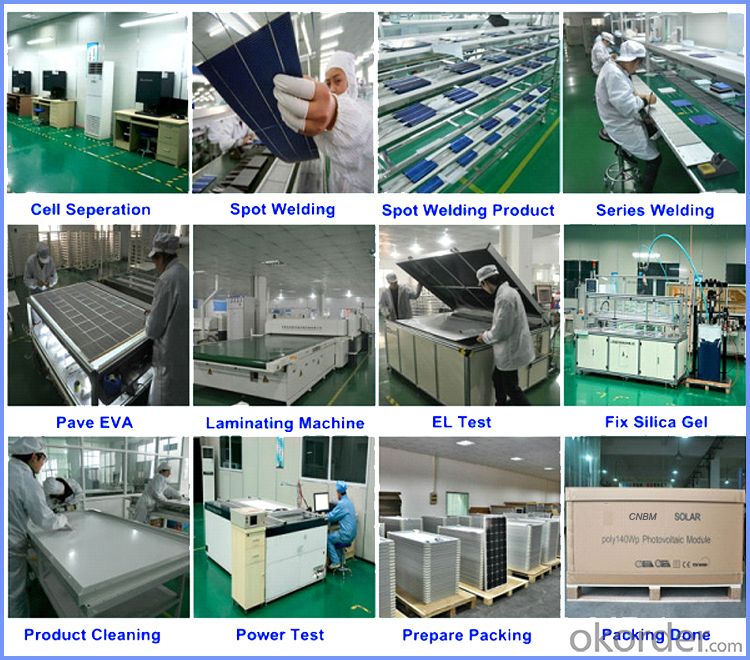
4. The Pics of Products
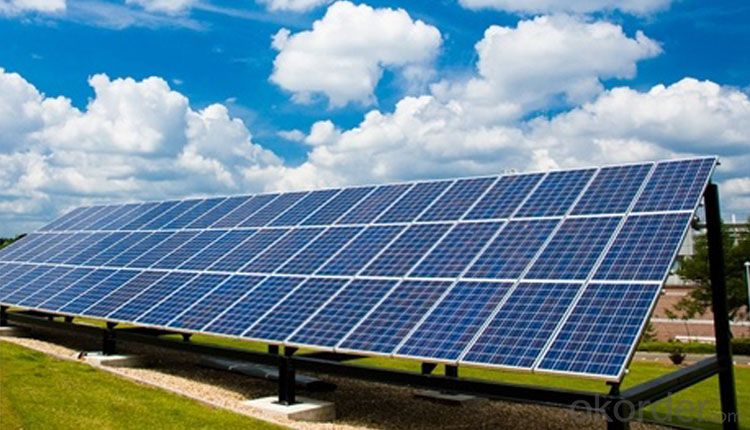
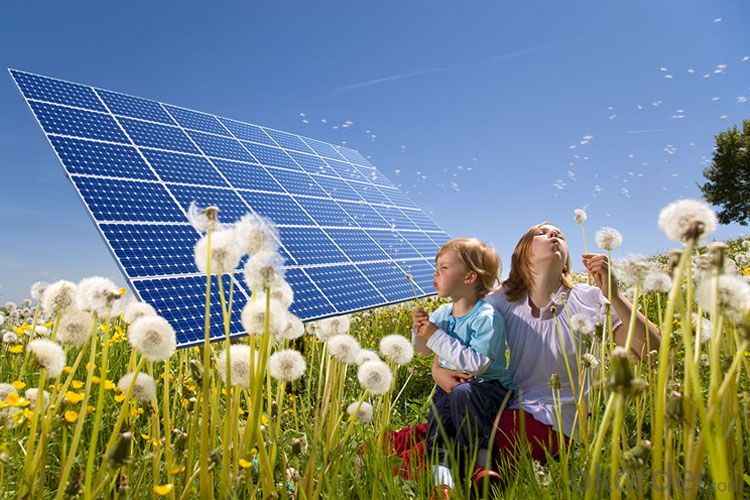
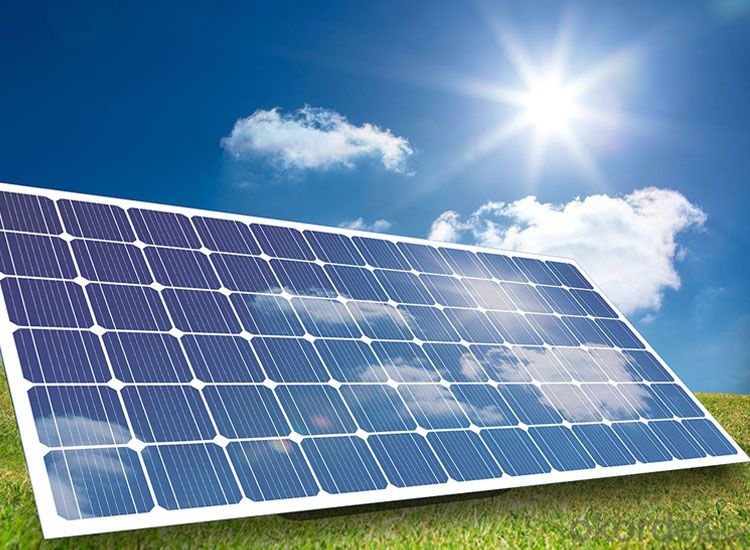

5. FAQ
A. Professional Manufacturers , Strict quality control & power classification Silicon Solar PV Module
B. 100% A grade solar cell with Positive tolerance power range.
C. High Conversion Efficiency , High transmission rate , low iron tempered Anti-reflecting/coating film 3.2mm glass
D. Anti-aging & high visosity EVA
E. high frame resistant & Double-sided fluorine TPT
F. Anodized aluminum alloy high thickness frame
G. 3 or 6 bypass diodes , 90mm 4m2 cable , MC4 connectors & waterproof junction box
H. Long life, Easy installation, high wind & hail impact resistance
I. Be resistant to atmospheric exposure & effects of delamination
J. ISO9001:2008/ISO14001:2004/OHSAS18001:2007/ CE /TUV/CEC/ IEC/EN61215 IEC/EN61730/CHUBB INSURANCE
K. 10Years Manufacturing Quality Warranty , 10Years 90% Power output Warranty, 25Years 80% Power output Warranty
- Q: Can solar panels be installed on assisted living facilities?
- Yes, solar panels can be installed on assisted living facilities. In fact, installing solar panels on these buildings can be highly beneficial as it can help reduce energy costs, promote sustainability, and contribute to a greener environment. Additionally, solar panels can provide a reliable source of renewable energy, helping to ensure a more reliable power supply for the facility and its residents.
- Q: Is it really possible for me living in Denver to build and install and setup my own solar panel to help make electricity for my home?
- Build okorder /
- Q: Hi, I have in my sailboat 2 2 V batteries. I would like to buy solar panel(s) in order to recharge them. As i am in mexico and there is always high sun . i think it is a good idea.Usage of the batteries is very light . I have found 5-2V pannels with 80mA that fit in the sailboat. I want to know if and how i can have like 5 to 0 of them set together to charge the batteries and what other material would i need.also, i would like to know what happend if the pannels only send on 5V in a 2 V battery? Is it still charging but on 40 % of the capacity a 2 v pannel would charge or its just not doing nothing ?
- 0 of the panels wired in parrell will give you enough power to trickle charge the batteries. You will need a charge controller to prevent a overcharge from damaging your batteries. A panel array that is rated at 2 volts actually puts out a unregulated voltage up to 2 volts. I have bought some charger controllers from OKorder at good prices. They will also prevent the discharge of your batteries at night or when the panels are in the shade. If the panels only put out 5 volts they will not charge the batteries. Check each panel outside in the sun with a DC volt meter for proper operation before connecting them.
- Q: hi,i have 4 solar panels. I can get 9V 400mA when i wired them parallel. The question is: how can i make a regulator circuit to store power into batteries.
- wire them in series parallel to get 8 volts at 200 mA, and that should charge a 2 volt battery. You may want to put in a series diode to prevent the battery from discharging into the panel when the sun is out. At 200 mA, depending on the battery size, you may not need much control, as that low a current will not overcharge a large battery, like a small auto battery. In fact it will take a very long time to charge it. edit: But do i need to add a regulator? If by that you mean a voltage regulator, no, as a solar panel has a high output resistance, and that will limit the current into the battery. If you mean a charge controller, if the battery is small, you may need a charge contoller to avoid overcharging the battery. But that is not a voltage regulator. .
- Q: I am moving to Hawaii and the house we are living in has independent electricity. (solar panels and gas powered generators.)
- Guide okorder /
- Q: i know that a solar panel of square meter generate 000 watts on a clear and sunny day, but i need to know the time rate. is it 000 watts per day or per hour? Thanks.
- This question was answered a few days ago. The Watt is the unit of of power, not the unit of energy. Energy is measured in Watt-Hours or Joules but not in Watts per unit time --- see the difference --- [] a Watt per hour v. [2] a Watt for an hour? The term, Watt per hour does not make any sense --- it is a bit like saying my car has 00 Horse Power per mile. You are right to say that the round figure for the power input of a solar panel is ,000 Watts per square metre, in the middle of the day when the sky is clear. Were the sun to shine for 0 hours per day in the summer, you could get as much as 7kWatt-Hours per day --- if you were very lucky. The roof area of a small house is no less then 50 square metres and this is more than big enough to supply all of you household energy needs but taking account of rainy days and taking account of the need to store the energy for night-time is an expensive problem, to satisfactorily overcome.
- Q: all i want to do is provide enough electricity for 2 fluorescent bulbs i was looking at some 80 watt panels how many of those would i need and what else do i need for storing the electricity for use at nite? and how much would it all cost?
- The solar panels are made in China because there are fewer environmental regulations and cheap coal power. It takes a lot of energy to melt silicon and there are toxic waste products. It would be three to five times more expensive to make the panels in the US ( three times is just for reprocessing the toxic wastes ). Solar cell made in China are about $2 a watt, perhaps as low as $ a watt but in truth the claims for $ a watt or less solar panels as in thin film solar panels have much lower efficiency and require perhaps ten times more surface area.
- Q: Can solar panels be installed on multi-story buildings?
- Yes, solar panels can be installed on multi-story buildings. In fact, multi-story buildings can provide ample space for solar panel installations, allowing for increased energy generation and potential cost savings. However, it is necessary to consider factors such as available roof space, structural integrity, and shading issues to ensure optimal positioning and efficiency of the solar panels.
- Q: I have to show in a project (a model house) how Solar Panels work. In my model I want to show Solar Panels creating electricity to power a T.V but I need to show how the power gets from the Solar Panels to the T.V. A diagram would be really helpful. Please try and make this as simple as possible as I'm only 3, but try and be specific as well!
- Light consists of small packets of energy called photons. When photons with sufficient energy strike the photocell its energy is converted into electrical energy which is stored in the batteries as dc voltage. To run a TV an invertor is used which converts dc to ac. Now you can make a block diagram of it and present it TC
- Q: does anybudy know about solar panels? plz reply me
- Solar panel refers to a panel designed to absorb the sun's rays as a source of energy for generating electricity or heating.A photovoltaic (in short PV) module is a packaged, connected assembly of typically 6×0 solar cells. Solar Photovoltaic panels constitute the solar array of a photovoltaic system that generates and supplies solar electricity in commercial and residential applications.
Send your message to us
Nds Solar Panels - High Efficiency Good Quality Poly 50w Solar Panel
- Loading Port:
- Shanghai
- Payment Terms:
- TT OR LC
- Min Order Qty:
- 1000 watt
- Supply Capability:
- 100000000 watt/month
OKorder Service Pledge
OKorder Financial Service
Similar products
Hot products
Hot Searches
